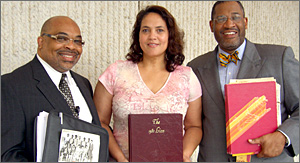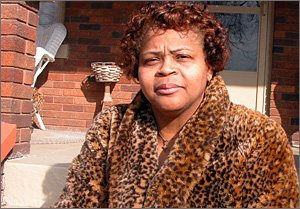"While school desegregation has been an imperfect revolution, falling far short of what some of its original proponents had dreamed it might have become, it has been a revolution nonetheless."
- Charles T. Clotfelter (2004), Duke University
In the early 1970s, a massive and unlikely effort began in cities across the United States. Thousands of children climbed onto school buses and rode across racial lines. Busing was meant to remedy decades of inequity. Black children had been forced to go to inadequate schools, with hand-me-down books and equipment -- sometimes without indoor plumbing. Busing was meant to mix the races, so everyone would have an equal education.
Throughout the 1970s and 80s, many schools were required by law to keep their student bodies diverse. But in the 1990s, judges began to throw out busing plans. And in 2007, the US Supreme Court issued what is arguably the most important school desegregation decision since Brown v. Board of Education in 1954.
The Brown decision required some school districts to assign students to schools based on race. The new ruling largely forbids it. It's the capstone in a series of decisions rolling back Brown.
With the end of busing, many schools were already resegregating. The new ruling is likely to accelerate that trend. The era of school desegregation is coming to an end.
Its end comes just as researchers are beginning to gain a clearer picture of what the effects of school desegregation have been on the people who went through it. New research finds that people who went to integrated schools believe their experiences there changed them in profound ways. People who spoke with American RadioWorks about their years in integrated schools echoed those findings. They say going to mixed-race schools changed who they grew up to be.
 Ann Davant Crehore cradles her West Charlotte High yearbook. Photo by Kate Ellis Ann Davant Crehore was bused to a formerly black high school in Charlotte, North Carolina in 1976. She says she realized how much that experience affected her when she got to college. A lot of her classmates had come from all-white schools, and she found she was less timid in unfamiliar settings than they were.
"I just was totally confident that I could handle myself and that I knew how to deal with all different kinds of people and I wasn't afraid," she said. Crehore says that made her realize that "I am this way because of where I went to school and who I went to school with - and you can't learn that in a book. I don't care how much you pay for your education. You cannot learn that from a book."
Tim Gibbs was two years ahead of Ann Crehore at West Charlotte High. He's a city planner in Charlotte now. He says he was recently at a meeting and noticed that he was one of only five African Americans in a room of about 60 people. He says he believes the time he spent at a mixed-race high school makes those situations easier for him to navigate today.
 Tim Gibbs (left) stands with fellow graduates of West Charlotte High School, Sonya Lee Gilbert and Eric Montgomery. Photo by Kate Ellis "I mean if I'm in a room of elected officials and I'm the only African American there, I'm fine," he says. "I don't feel uncomfortable." Research bears out those observations.
In one study, a team of scholars led by Columbia University's Amy Stuart Wells compiled interviews with more than 500 people who had attended integrated schools. In the report on the project, they write, "Our central finding is that school desegregation fundamentally changed the people who lived through it, yet had a more limited impact on the larger society."
People interviewed for the study said they valued their experience at segregated schools, and they believe they are more comfortable today in mixed-race settings. But they said for the most part, they have not gone on to live in diverse settings. They tend to live in neighborhoods that are largely one race, and go to church and socialize largely in single-race groups. Many of the white respondents said their workplace is not diverse.
Some people who supported school integration had hoped its effects would be more far-reaching. They hoped it would lead to greater integration throughout society. But Amy Stuart Wells argues that that may have been too much to ask of schools.
She points out that schools in the 1970s were doing more to mix the races than any other institution in society, with the possible exception of the military.
"It was really the children being asked to correct years and years of inequality and segregation and we need to honor their challenge," she told American RadioWorks. "When they were in school thought they were at the forefront of major change but when they left their high schools realized schools were much more integrated than society."
Many people who responded to the study or who took part in the American RadioWorks documentary said that even within their integrated schools, there was segregation. Throughout the 70s and 80s, even in otherwise integrated schools, classes for high-achieving students still tended to be disproportionately white. And students still tended to segregate themselves by race when given a choice. There were still white tables and black tables and Hispanic tables in the lunchroom.
Critics of busing say it didn't achieve its goals, and it was too expensive and burdensome. And they say it never got rid of the "achievement gap." White students tended to do better academically than black or Hispanic students before integration, and they still do now.
But Gary Orfield, with UCLA's Civil Rights Project, argues that overall, African American school achievement improved after integration. He says school graduation rates went up and the achievement gap got smaller.
"Minority students who go to integrated high schools are much more likely to go to college," Orfield says. "They're more likely to be successful in college. They're more likely to live and work in integrated settings. And those happen to be the best settings that are available in this society."
Polls show most African Americans do support school integration. A 1998 poll by Public Agenda found that most African Americans and most whites believe integration improves race relations. But only a slim majority of African Americans, 56 percent, supported busing to achieve integration. Many African American people say busing cost too much - too much money and too much heartache.
The burden to integrate fell disproportionately on blacks and other people of color. African American children were more likely than white children to be bused out of their neighborhoods. They had to get up earlier, and it was harder for them to participate in after-school events. It was harder for their parents to get to teacher conferences, or to watch their children acting in plays or playing football.
 Deborah Stallworth filed a lawsuit in Louisville, KY to remove the limit on the number of African American students that could attend Central High School.
Photo by Kate Ellis Deborah Stallworth of Louisville, Kentucky remembers watching her sister get on the bus, headed for a white neighborhood. Their mother was panicked. She didn't know where the bus was taking her child, so she tried to follow it. Stallworth remembers her mother crying when she failed to keep up with the bus.
"I never saw my mother cry, but she lost this bus that had her baby and she had no idea where they were taking her baby to," she says.
And black communities lost schools and leaders they were proud of. When integration came, many black schools were closed altogether -- sometimes because the buildings were in worse shape than the white schools, sometimes because school district officials assumed white parents would be reluctant to send their children there. Black principals were often sent to white schools and demoted.
In his article, "The Costs of Brown: Black Teachers and School Integration," Leiden University historian Adam Fairclough writes:
Across the South, school boards closed black high schools, or, if they retained the buildings, converted them into junior highs. To add insult to injury, schools that had been named for black teachers or historical figures were given new names. Black principals were then demoted or given meaningless titles. In Alabama, the number of black principals declined from 210 to 57, in Virginia from 170 to 16. In the eyes of many blacks, the process of integration was tainted by the fact that the power to control desegregation was placed in the hands of those who fought so hard to retain segregation.
African Americans teaching in racially mixed classrooms for the first time were often humiliated by their new colleagues. Former teacher Mae Clark Orr says male colleagues asked her whether it were true that black men had larger penises than white men.
"I said I was a married woman and I didn't know," she recalled.
A female colleague asked her why she had nice clothes. Where did she wear them?
And the students sometimes let the African American teachers know they were not welcome. In her research on segregation in Louisiana, Kate Ellis found many African Americans angrier about their experiences with integration than with Jim Crow. During segregation African Americans could avoid racist insults by keeping away from whites. During integration black students and teachers lost some of that protection.
One teacher from New Iberia, Louisiana, recalls being rebuffed by a white boy who needed help: "He was assigned to me and he had a broken leg or something. He was on crutches. I went to help him to sit [and he said to me], 'Don't you touch me.' He was in second grade."
"The white children wanted to go to the white teachers," the teacher added. "That made you feel like a dog."
African American students, too, remember protests and threats when busing began, and snubs for years afterward.
 Brandi Williams graduated from West Charlotte High School in 1994. Photo by Kate Ellis Brandi Williams remembers being bused when she was in grade school. She'd been tested as a gifted student, "but my 6th grade teacher told my mother I needed help developing expectations, because I would never be a doctor or a nurse," she says. "It was crazy."
That same teacher gave the children a lesson on shaking hands. "But you could tell she really didn't want to touch us," Williams says. "She didn't want to shake our hands, the black kids."
But Brandi Williams says she wouldn't trade away her later experience in mixed race schools. She made friends, and still has white friends today. She has no problems being in mixed race settings -- but her husband, who went to an all-black school, is uncomfortable around white people.
Brandi Williams would like her son to go to a diverse school, but the school he currently attends is largely black. Since busing ended in Charlotte, many schools have resegregated. Neighborhoods in Charlotte never really desegregated, so when the city went back to a system of neighborhood schools, many schools became reflections of the neighborhoods they were in.
 Amber Koonce is a student at Providence High School in Charlotte. Photo by Catherine Winter Some of the children who attend school in Charlotte today say they're sorry to see that change. Amber Koonce goes to Providence High School in Charlotte. When Charlotte bused students, Providence was mixed, but now Amber is one of few African American students there. Most of the children are white and come from affluent families.
"Often I think of how different history class might be if my class had a lot of minorities in it when we were talking about certain issues as maybe the Holocaust or slavery," Amber says.
"I think the problem is we don't know any different than the environment we are in, so we don't know what we're missing out on," she says. "I could be missing out on a lot of stuff, and I wouldn't know just because I haven't been given the opportunity to have the experience."
Back to An Imperfect Revolution
| 


